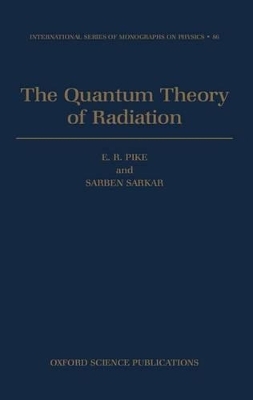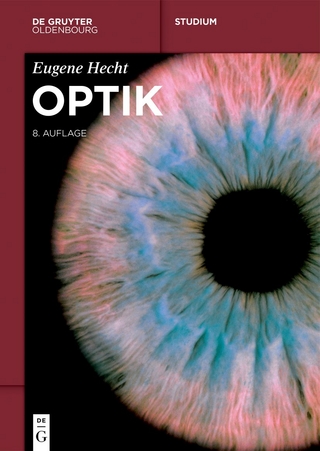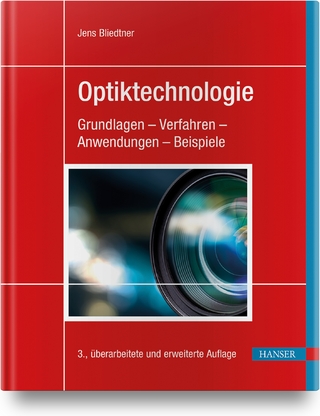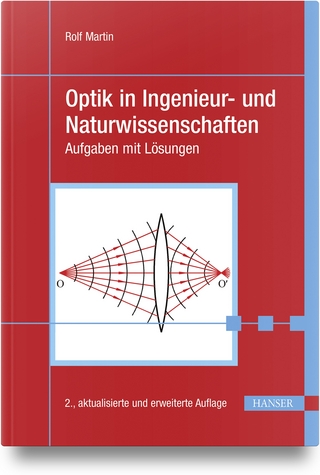
The Quantum Theory of Radiation
Seiten
1995
Clarendon Press (Verlag)
978-0-19-852032-0 (ISBN)
Clarendon Press (Verlag)
978-0-19-852032-0 (ISBN)
Covers phenomena in photon-matter interactions over a range of many orders in energy. A thorough treatment of relativistic quantum electrodynamics and more general gauge theories is given, and their connections with quantum optics and atomic physics are explored. The theory is extended to include open systems.
This book is unique in covering phenomena in photon- matter interactions in a unified way over a range of many orders in energy. The quantum field theoretic approach to the fully relativistic theory of quantum electrodynamics (QED) is presented together with the non- relativistic theory in both confined and unconfined geometries. The predictions of QED have been verified to a greater accuracy than any other physical theory. Moreover QED is a paradigm for other gauge theories and is presented in such a way that the generalisation to other gauge theories is natural. Gauge and Poincare symmetry properties and the non-existence of a photon wave function are thoroughly discussed. Starting from the Dirac equation the non-relativistic interaction of the electron with the electromagnetic field is derived as an effective Hamiltonian of multipole expansions. Much of quantum optics is based on the lowest order dipole approximation. From this point on the treatment of fully relativistic QED and quantum optics is done in parallel. Applications of perturbation theory such as Compton and Moller scattering and the theory photdetection are given. After the impressive successes of QED, the limitation of the theory and the necessity of electroweak theory and quantumchromodynamics are discussed. The remaining chapters are devoted to quantum optics inside cavaties. Various approaches to open systems such as master equations are discussed within the context of active systems (e.g. the laser) and passive systems. Semi- classical approximarions are shown to imply a rich non- linear dynamics including chaos for certain parameter regimes. The effect of fluctuations on such non-linear dynamics is also studied. The final chapter is devoted to highly non- classical states of the light field such as photon number, squeezed and two photon entangled states. The latter are studied for the important system of parametric down conversion and the localisation properties of photons are characterised in terms of asympotic tails in photodetection probabilities as a function of time delay. The range of the book has wider benefits. Workers in quantum optics will gain a deeper understanding of the foundations of their subject and field theorists will see concrete examples of open systems, which are beginning to impinge on fundamental theories.
This book is unique in covering phenomena in photon- matter interactions in a unified way over a range of many orders in energy. The quantum field theoretic approach to the fully relativistic theory of quantum electrodynamics (QED) is presented together with the non- relativistic theory in both confined and unconfined geometries. The predictions of QED have been verified to a greater accuracy than any other physical theory. Moreover QED is a paradigm for other gauge theories and is presented in such a way that the generalisation to other gauge theories is natural. Gauge and Poincare symmetry properties and the non-existence of a photon wave function are thoroughly discussed. Starting from the Dirac equation the non-relativistic interaction of the electron with the electromagnetic field is derived as an effective Hamiltonian of multipole expansions. Much of quantum optics is based on the lowest order dipole approximation. From this point on the treatment of fully relativistic QED and quantum optics is done in parallel. Applications of perturbation theory such as Compton and Moller scattering and the theory photdetection are given. After the impressive successes of QED, the limitation of the theory and the necessity of electroweak theory and quantumchromodynamics are discussed. The remaining chapters are devoted to quantum optics inside cavaties. Various approaches to open systems such as master equations are discussed within the context of active systems (e.g. the laser) and passive systems. Semi- classical approximarions are shown to imply a rich non- linear dynamics including chaos for certain parameter regimes. The effect of fluctuations on such non-linear dynamics is also studied. The final chapter is devoted to highly non- classical states of the light field such as photon number, squeezed and two photon entangled states. The latter are studied for the important system of parametric down conversion and the localisation properties of photons are characterised in terms of asympotic tails in photodetection probabilities as a function of time delay. The range of the book has wider benefits. Workers in quantum optics will gain a deeper understanding of the foundations of their subject and field theorists will see concrete examples of open systems, which are beginning to impinge on fundamental theories.
1. Quantization of the free Maxwell field, canonical and functional approaches ; 2. The photon as a particle: the general one-photon state ; 3. Electron-photon and matter-photon interactions: relativistic and non-relativistic cases ; 4. Calculational methods for quantum electrodynamics ; 5. Quantum electrodynamic processes ; 6. Extensions of quantum electrodynamics ; 7. Open systems ; 8. Instabilities and chaos in quantum optics: semi-classical theory ; 9. Fokker-Planck equations: quantum fluctuations ; 10. Non-classical light ; Appendix 1. Basic algebra ; Appendix 2. Topological structures ; Appendix 3. Tensors and invariances in relativity ; Appendix 4. Stochastic differential equations ; References ; Index
| Erscheint lt. Verlag | 7.12.1995 |
|---|---|
| Reihe/Serie | International Series of Monographs on Physics ; 86 |
| Zusatzinfo | 1 halftone, line figures |
| Verlagsort | Oxford |
| Sprache | englisch |
| Maße | 162 x 242 mm |
| Gewicht | 723 g |
| Themenwelt | Naturwissenschaften ► Physik / Astronomie ► Optik |
| Naturwissenschaften ► Physik / Astronomie ► Quantenphysik | |
| Naturwissenschaften ► Physik / Astronomie ► Thermodynamik | |
| ISBN-10 | 0-19-852032-8 / 0198520328 |
| ISBN-13 | 978-0-19-852032-0 / 9780198520320 |
| Zustand | Neuware |
| Informationen gemäß Produktsicherheitsverordnung (GPSR) | |
| Haben Sie eine Frage zum Produkt? |
Mehr entdecken
aus dem Bereich
aus dem Bereich
Grundlagen - Verfahren - Anwendungen - Beispiele
Buch | Hardcover (2022)
Hanser, Carl (Verlag)
49,99 €
Aufgaben mit Lösungen
Buch | Hardcover (2023)
Hanser, Carl (Verlag)
29,99 €


